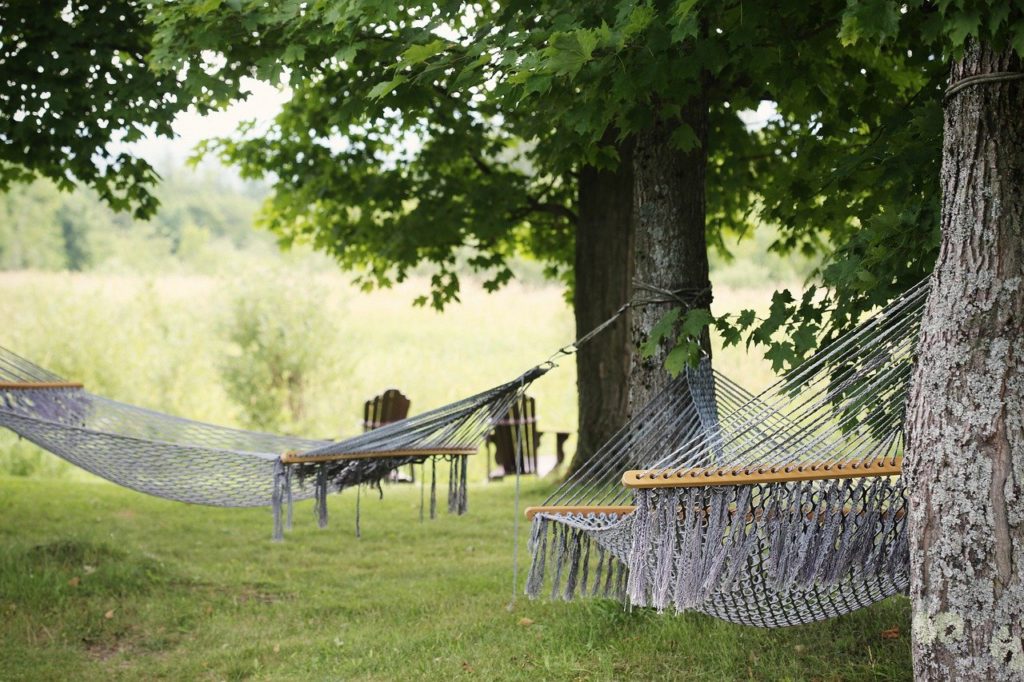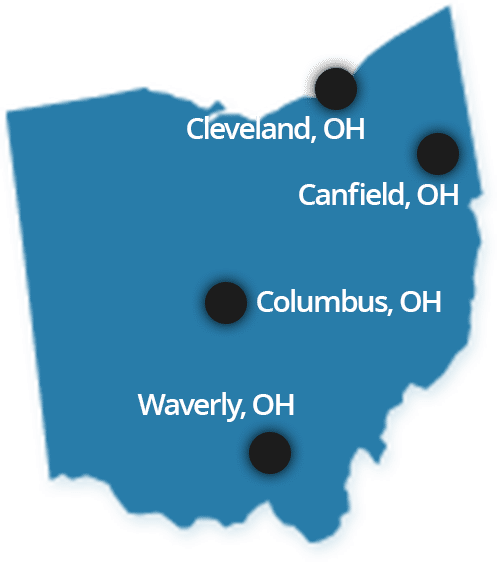When installing a hammock, people are usually looking forward to relaxing with a book. They don’t think of the possibility for accidents, let alone serious injury or death. Yet, according to the U.S. Consumer Products Safety Commission (CPSC), hammocks injure or cause the wrongful death of around 3,000 people in North America each year.

Unfortunately, there are a substantial number of cases involving hammock-related injury or death. Most recent cases involve hammocks being fastened to structures such as trees or brick columns which later collapsed. Other cases involve strangulation and suffocation. Branches can fall from tree canopies when victims least expect it.
Proper installation and use of a hammock can be the difference between life and death, as the following examples detail.
Lewis & Clark College
The most recent tragedy occurred on August 29, 2022, on the campus of Lewis & Clark College in Portland, Oregon. A masonry column collapsed killing one male student and seriously injuring two other female students. According to investigators, six people were lying evenly on three hammocks that were attached to four free-standing columns when one column fell inward toward them. The incident is still under investigation.
Similar Incidents
In recent years, nearly a dozen similar incidents have occurred involving death or paralysis after the main weight bearing supports of hammocks collapsed. In 2017, a Massachusetts woman sued ENO when one of the hammock’s supports, a brick chimney, collapsed on her leaving her paralyzed.
ENO was sued under similar circumstances in May 2016 when a 13-year-old Iowa girl died after a brick column bearing the weight of the hammock fell on top of her. In two additional instances during the spring of 2016, a Connecticut girl and an Arkansas woman died when the trees to which their hammocks were attached collapsed. On May 21, 2017, another victim, a 15-year-old Georgia girl, was killed in the same manner.
The Dangers of Hammocks Designed for Infants and Children
Hammock dangers and design flaws are not limited to hammocks used by children and adults. Baby sleep hammocks are marketed as a way to mimic sleep in the womb and help newborns with sleeping difficulties.
Infant hammocks either hang from their own stand or are suspended over a crib or pack-and-play. Baby shopping cart hammocks are also on the market; these are small hammocks suspended over a shopping cart so a baby can accompany their parent or caregiver into a store. Other types include toy storage hammocks, as well as child hammock pods and swing chairs, which are designed for children to use as a swing or reading nook.
While many types of infant and child hammocks are marketed as fun or as beneficial to parents, they aren’t necessarily safe. Medical experts agree that baby sleep hammocks don’t come close to meeting the criteria for safe infant sleep.
According to Dr. Gina Posner, a pediatrician at MemorialCare Orange Coast Medical Center in Orange County, California, “Numerous studies have shown that to decrease the risk of SIDS (Sudden Infant Death Syndrome), the baby needs to sleep on his or her back on a flat, firm surface. The crib hammock is neither firm or flat and that can cause the baby to become entrapped in it if he or she rolls.”
Toy storage hammocks are especially dangerous because they lack a spreader bar, which ensures the hammock maintains its width, to prevent child entanglements that may result in strangulation. Aside from entanglement and strangulation, infants and children are also at risk of falling out of these hammocks.
Hammock Product Recalls
Over the years, many hammock-related products have been recalled from manufacturers big and small.
Currently, a hammock stand named Key West Knock Down Hammock Stands, sold exclusively at Lowe’s, is being recalled after the manufacturer received nine reports of the stands breaking at the base. The U.S. Consumer Products Safety Commission posted a recall notice on its website on July 21, 2022.
The recall applies to about 32,500 products distributed by The Hammock Source. According to the company, “the weld attaching the stand to the base can break, posing a fall hazard.” Lowe’s recall notice elaborates, “Consumers should immediately stop using the recalled hammock stands and contact The Hammock Source for instructions on receiving a full refund.” The company is not currently facing legal action over the recall. The defective product was sold at Lowe’s stores nationwide and online at Lowes.com from October 2020 through May 2022.
In 2016, BYA Sports recalled hundreds of outdoor hammocks because of a defective weld ring. This recall included two reports of ring failure, one resulting in bruising from a fall.
In September 2014, Bed Bath & Beyond recalled nearly 14,000 Destination Summer Hammock Stands after learning the hooks that attached the hammock to the stand could bend or break. The retailer received reports of hook failure, resulting in consumers falling to the ground sustaining various injuries.
In August 2010, Mama’s Little Helper recalled hundreds of baby sleeper hammocks after receiving three reports of hammocks becoming dangerously unbalanced. In one case, a 2-month-old infant rolled to the side corner of the hammock and was found crying face down. That same month, the company recalled a small number of infant and toddler hammock stands that could potentially break causing a baby to fall. In one instance, a four-month old infant fell from a hammock when the metal stand broke but was not injured.
In December 2009, Amby Baby USA recalled 24,000 Baby Motion Beds/Hammocks following two infant deaths from suffocation. “The side-to-side shifting or tilting of the hammock can cause the infant to roll and become entrapped or wedged against the hammock’s fabric and/or mattress pad, resulting in a suffocation hazard,” the CPSC said.
In 1996, 10 manufacturers recalled over 3 million lightweight, Net Mini-Hammocks that lacked spreader bars to hold the hammocks open. According to the CPSC, it has been known for years that mini-hammocks and baby hammocks lacking a spreader bar cause strangulation and death. This can happen when children are attempting to climb into, out of, or are playing on mini-hammocks like swings.
Between 1984 and 1995, the CPSC received at least a dozen reports of children between the ages of five and 17 who became entangled and died when using these types of hammocks. The cases describe a seven-year-old girl who suffered permanent brain damage after becoming entangled and a mother who had to resuscitate her five-year-old son after he became trapped in a mini-hammock.
Consumers are often drawn to hammocks by the appeal of relaxation, building a trendy backyard, or even seeing a hammock as a parenting tool to enhance their child’s wellbeing. Despite years of product recalls and lawsuits, hammocks continue to be a danger to people of all ages. As manufacturers and retailers continue to market and sell these products, it is imperative that they keep consumers adequately informed about safety while being held
accountable to avoid repeating the tragedies of the past.
Get Help from an Experienced Product Liability Attorney
If you or someone you love has been injured by a hammock, it’s in your best interest to talk to an experienced Ohio product liability attorney like Plevin & Gallucci as soon as possible. Plevin & Gallucci is currently handling a case similar to the Lewis & Clark incident in which two young girls lost their lives when a hammock collapsed.
We offer free consultations to help you protect your claims and make informed decisions about how to move forward. To schedule yours, just call 855-4PLEVIN or fill out the contact form on this page

